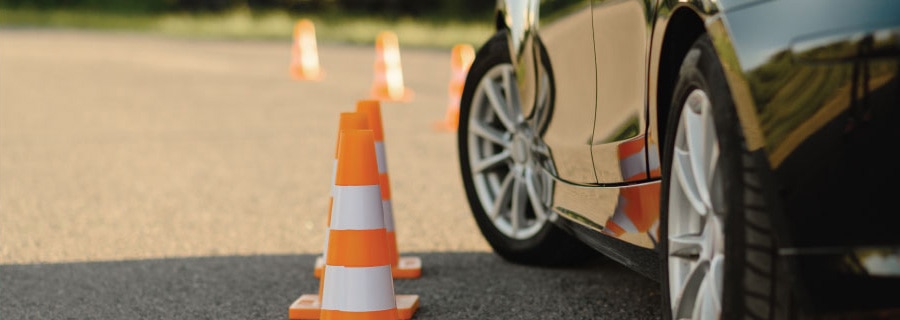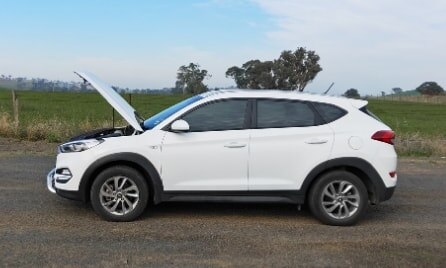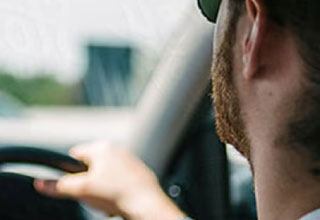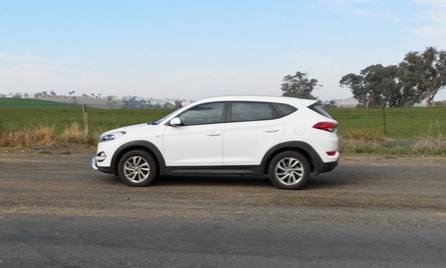- text
-
Cover and benefits are subject to eligibility criteria and terms and conditions, including the limits and exclusions of the insurance policy. Any advice provided is general only and may not be right for you. Before you purchase this product you should carefully read the Car Insurance Product Disclosure Statement and consider the Target Market Determination to decide if it is right for you.
A guide to P plate driving test.
For many, getting a driver’s licence is a big deal. It gives you the freedom to drive on your own and a huge sense of independence. But before you can enjoy this luxury, you need to pass your driving test. Fortunately, with practice and training, you should be able to ace it.
Here are some quick tips you can apply that might be able to help get your licence on the first go. Note: these are general tips, for more detailed information such as road regulations in your state or territory, you should refer to the relevant government body.
How states and territories differ in the P-plate driving test.
Here's what you need to do to get your Ps in different Australian states and territories.
Preparing for the P-plate driving test.
While the length of the driving test might be different from state to state, there are general ways you can prepare for the P-plate driving test, no matter where you live.
Adjust mirrors and seat position.
Your mirrors assist in avoiding blind spots, which is crucial when going for your driving test, so get into the habit of checking them every time you get in the car and then adjusting them if required. For seating, you should be positioned straight in your seat, with your back comfortably against the seat and your feet reaching down to the pedals. Your arms should reach the wheel without you having to lean forward.
Get a driving lesson with a qualified instructor.
A great way to get comfortable behind the wheel is to do a few lessons with an instructor. They can teach you proper techniques with tips and tricks on how to navigate roads more effectively. Another perk is that some driving lessons count for more hours. Check with your state or territory rules on how you can get bonus logbook hours.
Drive the test routes.
Most qualified driving instructors will take you along previously tested routes during your driving lessons. These routes have a range of traffic situations and manoeuvres, like driving around a roundabout. They also get you familiar with the signs you’re likely to see during your test.
Drive in different weather conditions.
You may be required to do night hours of driving to qualify for your driver’s licence, but you could also try driving in different weather conditions. Wet roads can make for a different driving experience, and if your test happens to be on a rainy day, you’ll want to be prepared.
Practice commonly failed areas of the driving test.1
If you have an instructor, ask them to help you with parts of driving you struggle with. From changing lanes to parking, practice and repetition should get you feeling more confident. Here are some common mistakes learners make during their driving tests:
Speeding
Failing to stop completely at a stop sign
Failing to give way
Failing to maintain a correct road position
Failing to obey road rules
Tips to pass your driving test first go.

Drive a car you’re comfortable in.
If you have the luxury of learning in your family car or your own, opt to do your driving test in it. You’ll be more accustomed to the ‘feel’ of the vehicle and comfortable locating indicators, breaks, lights, and other features. Make sure your car is registered, otherwise you can't drive it during the test.
Listen to your instructor.
It’s important to focus on exactly what your instructor tells you, as they’ll navigate each point of the route during your test. If you feel yourself start to get nervous, remember to breathe and listen to the instructions carefully.
Drive 5km under the speed limit.
Usually, instructors encourage you to drive slower than the speed limit, so you are well prepared to stop. It also ensures you don’t accidentally speed, which might cost valuable points on your test score.
Remember to check your blind spots.
It’s easy to get comfortable relying on your mirrors to change lanes, but head checks are crucial. People tend to quickly glance over their shoulder, but your instructor will be looking for a more obvious indication that you’ve scanned the area. Remember to move your head to ensure the shoulder check is visible.
Pay attention to the time.
Depending on the time of day you go for your driving test, you might run into areas restricted to different speed limits. For example, most school zones operate from 8 to 9.30 am and from 2.30 to 4 pm, meaning you can only go 40km/h at these times.
Car insurance after you get your licence.
After passing your test, you will no longer be covered under the supervising driver in your car insurance; you will need to ensure that you are covered to drive a vehicle in your own right. Everyday Insurance from Woolworths offers a range of cover options for you and your car. Check the details of your policy to ensure you know that you have cover.
Find the cover that's right for you.
Related articles.
This article provides general information only and you should consult a qualified driving instructor and your local roads authority for professional guidance. The Hollard Insurance Company does not accept any liability for any loss suffered as a result of relying on the information in this article.
1 https://www.ltrent.com.au/blog/what-are-the-main-reasons-that-learners-fail-their-test-in-nsw











